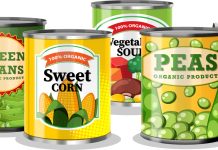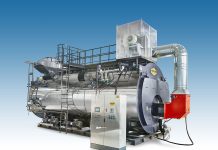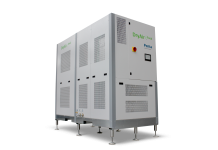Results
 The most significant parameters for assessing the quality of ground coffee are: h* corresponding to the shade of colour, i.e. level of brown, and L characterising the light to dark colour intensity. C* is not particularly interesting in relation to a product in powder as ground coffee; however, it is useful for a liquid like brewed coffee. The results point out also that the blend is the main discriminating parameter of coffee colour, with a more evident differentiation in relation with the L* parameter rather than the h* shade. Hence, the influence of process variables, such as type of roasting unit (i.e. heating method) and roasting temperature, has been assessed individually for each examined blend. The statistical data analysis shows that the light to dark intensity (L*) reached at the end of the roasting phase is always significantly different in relation with the implemented heating method. On the contrary, no variations are registered concerning the h* parameter, i.e. related to the shades of brown of coffee (Figure 3). Moreover, if the same heating method is applied during the roasting phase (roasting units 2 and 3), signifi cant differences have been observed only in relation with the L* parameter (Figure 4). These variations have been identifi ed for each blend, except for blend A (Figure 5) consisting at 100% of Arabian coffee, which can derive from the different temperature reached at the end of the roasting process or from the different temperature profi le that has been applied. The conducted research needs closer study, in order to understand the reasons of the infl uence of the heating method and of the roasting temperature on the variable L* for blends that registered signifi cant differences. It is also necessary to assess whether brewed coffee shows any real sensorial difference besides the difference in colour. The extensive data collected with the performed tests, and the results of running studies, will allow the optimal combination of roasting parameters in relation to the “target product” planned for each considered blend.
The most significant parameters for assessing the quality of ground coffee are: h* corresponding to the shade of colour, i.e. level of brown, and L characterising the light to dark colour intensity. C* is not particularly interesting in relation to a product in powder as ground coffee; however, it is useful for a liquid like brewed coffee. The results point out also that the blend is the main discriminating parameter of coffee colour, with a more evident differentiation in relation with the L* parameter rather than the h* shade. Hence, the influence of process variables, such as type of roasting unit (i.e. heating method) and roasting temperature, has been assessed individually for each examined blend. The statistical data analysis shows that the light to dark intensity (L*) reached at the end of the roasting phase is always significantly different in relation with the implemented heating method. On the contrary, no variations are registered concerning the h* parameter, i.e. related to the shades of brown of coffee (Figure 3). Moreover, if the same heating method is applied during the roasting phase (roasting units 2 and 3), signifi cant differences have been observed only in relation with the L* parameter (Figure 4). These variations have been identifi ed for each blend, except for blend A (Figure 5) consisting at 100% of Arabian coffee, which can derive from the different temperature reached at the end of the roasting process or from the different temperature profi le that has been applied. The conducted research needs closer study, in order to understand the reasons of the infl uence of the heating method and of the roasting temperature on the variable L* for blends that registered signifi cant differences. It is also necessary to assess whether brewed coffee shows any real sensorial difference besides the difference in colour. The extensive data collected with the performed tests, and the results of running studies, will allow the optimal combination of roasting parameters in relation to the “target product” planned for each considered blend.
References
“Hunter Lab Color Scale”, Insight on Color 8, 9, August 1-15, 1996, Reston, VA, USA. Hunter Associates Laboratories. “La comunicazione precisa del Colore”, Minolta Italia, 1994, Milano, Italy.
I. Lopez-Galilea, M. Paz de Pea, C. Cid, “Application of multivariate analysis to investigate potential antioxidants in conventional and torrefacto roasted coffee”, European Food Research and Technology, 2008, 227, 141-149.
P. Pittia, M. Dalla Rosa, G. Pinnavaia, R. Massini, “Evoluzione di alcune caratteristiche fi siche del caffè durante la torrefazione”, Industrie Alimentari, 1996, XXXV, 945-950.
S. Pizzirani, S. Romano, M. Anese, D. Barbanti, “Studio delle caratteristiche chimico e chimico-fi siche del caffè torrefatto e della bevanda di estrazione”, Industrie Alimentari, 1996, XXXV, 658-663.
by Elena Manara*, Milena Lambri*, Alessia Girasoli**
*Institute of Oenology and Food Engineering, Faculty of Agriculture, Università
Cattolica del Sacro Cuore, Piacenza
**Torrefazione Musetti Srl



